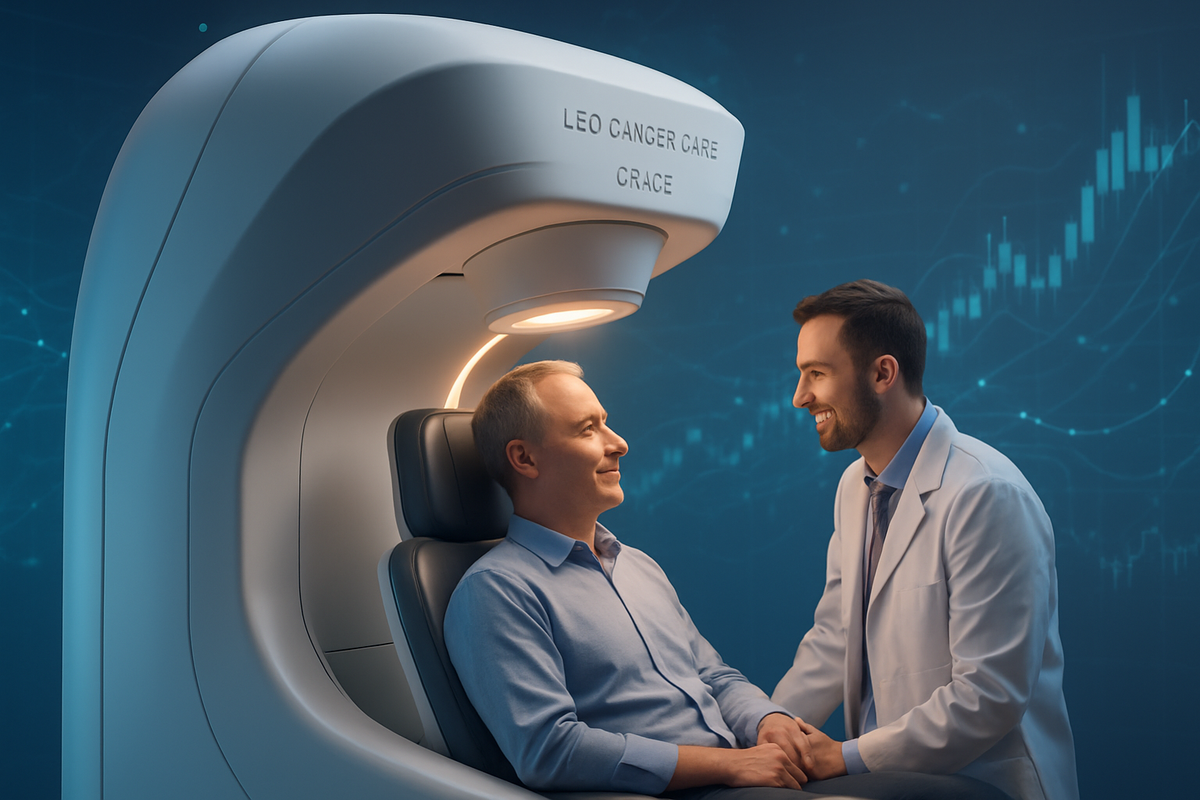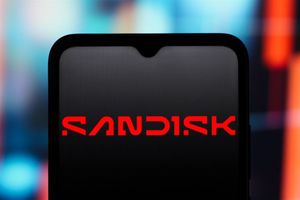
San Francisco, CA – October 3, 2025 – In a move set to redefine the landscape of radiation oncology, Leo Cancer Care officially introduced its groundbreaking Upright Photon Therapy System, "Grace," at the ASTRO 2025 meeting in San Francisco on September 28, 2025. This innovative system challenges decades of conventional practice by treating cancer patients in a natural, upright position, promising enhanced patient comfort, improved treatment precision, and significantly reduced infrastructure costs.
The introduction of Grace marks a pivotal moment for Leo Cancer Care, expanding its pioneering upright treatment approach from particle therapy (with its FDA-cleared Marie™ system) to the more widely accessible photon therapy. The system's potential to democratize advanced cancer care, coupled with its patient-centric design, positions it as a disruptive force that could reshape market dynamics for both established medical device manufacturers and healthcare providers globally.
Grace: Redefining Radiotherapy Delivery
The Grace system is a revolutionary radiotherapy device engineered to deliver conventional X-ray radiation treatment with unparalleled precision and patient comfort. Unlike traditional linear accelerators (linacs) where patients lie supine, Grace utilizes an upright patient positioning system that offers six degrees of freedom and 360° continuous rotation. This system positions the patient in front of a stationary 6 MV photon linear accelerator, eliminating the need for a bulky, rotating gantry.
Key features of the Grace system include an integrated fan-beam CT scanner at the treatment isocenter, allowing for planning-quality imaging throughout the entire treatment workflow. This capability paves the way for online adaptive radiotherapy, where treatment plans can be dynamically adjusted based on real-time patient anatomy. Furthermore, Grace incorporates an ultrafast multileaf collimator (MLC), designed to optimize dose conformity and treatment efficiency, potentially challenging the speeds of conventional MLCs currently on the market. The system is also designed for compatibility with RaySearch Laboratories’ (STO: RAYB) RayStation® treatment planning system and RayCare® oncology information system.
The development of Grace follows Leo Cancer Care's earlier success with its Marie™ upright particle (proton) therapy solution, which received FDA 510(k) clearance for its patient positioning system in May 2025. The company’s commitment to "pioneering with purpose" is evident in Grace, named after American computer scientist and U.S. Navy Rear Admiral Grace Hopper, whose famous quote, "The most dangerous phrase in language is 'But we've always done it this way'," encapsulates Leo Cancer Care's mission. While Grace is currently under development and not yet commercially available, its formal launch at ASTRO 2025 and the formation of the Upright Photon Alliance signal a strong trajectory towards market entry. The alliance, comprising leading institutions like Centre Léon Bérard, Cone Health, IHH Healthcare (KLSE: IHH, SGX: Q0F), Mayo Clinic, and OncoRay, will facilitate the installation of the first five pre-commercial Grace systems, gathering crucial research data.
Market Ripple Effects: Who Wins and Who Faces Challenges?
The advent of Leo Cancer Care's Grace system is poised to create significant shifts in the financial markets, particularly within the radiotherapy equipment manufacturing and cancer treatment services sectors.
Potential Winners:
RaySearch Laboratories AB (STO: RAYB) stands out as an early beneficiary. Its RayStation® and RayCare® systems are designed to be compatible with Grace, solidifying its position as a key software provider for this innovative platform. This strategic integration could lead to increased licensing agreements and market share for RaySearch, positively impacting its stock performance as upright therapy gains traction.
IHH Healthcare Berhad (KLSE: IHH, SGX: Q0F), a major international private healthcare group, is another strategic winner. As a member of the "Upright Photon Alliance," IHH Healthcare will have early access to Grace systems. This allows them to explore the benefits of upright therapy firsthand, potentially enhancing patient experience, optimizing clinical outcomes, and reducing operational costs across their extensive network of hospitals. Successful implementation could improve profitability and stock value.
Specialized oncology service providers like American Oncology Network (NASDAQ: AONC) and The Oncology Institute (NASDAQ: TOI) could also see benefits. The promise of a more patient-centric and potentially cost-effective treatment with a smaller footprint could make advanced radiotherapy more accessible in community oncology settings, attracting more patients and potentially improving their margins.
Potential Challengers:
Established radiotherapy equipment giants like Varian Medical Systems (now part of Siemens Healthineers, NYSE: SI) and Elekta AB (STO: EKTA B) may face significant competitive pressure. Their dominance in the conventional linear accelerator market, characterized by large gantries and substantial infrastructure requirements, is directly challenged by Grace's compact, cost-effective, and upright design. If upright therapy gains widespread acceptance, these incumbents may experience pressure on sales of their traditional systems. They will likely need to accelerate R&D into similar upright technologies, pursue acquisitions, or aggressively highlight advancements in their existing supine-treatment platforms.
Accuray Incorporated (NASDAQ: ARAY), known for its CyberKnife and Radixact systems, could also feel the impact. While offering advanced precision, their systems still rely on supine patient positioning and typically have a larger equipment footprint. Accuray may need to re-evaluate its product roadmap to address the advantages offered by upright therapy. Similarly, Shanghai United Imaging Healthcare Co., Ltd. (SSE: 688271), a growing global player, would need to quickly adapt its strategy or risk losing market share in segments embracing this new paradigm.
A Broader Significance: Trends, Ripples, and Regulatory Outlook
Grace's introduction aligns with and accelerates several broader industry trends in radiation oncology, while also posing new questions for regulatory bodies and offering historical parallels.
The system strongly resonates with the growing emphasis on patient-centric care and comfort. By allowing patients to be treated in a natural, upright posture, Grace addresses common anxieties and discomforts associated with traditional supine treatments, fostering a more humanized experience. This focus on patient well-being is a defining characteristic of modern healthcare. Furthermore, research suggesting improved anatomical stability and precision in an upright position aligns with the continuous drive for more accurate radiation delivery seen in techniques like IMRT and SBRT, potentially leading to better tumor control and reduced side effects.
The integration of a fan-beam CT scanner for online adaptive radiotherapy (ART) positions Grace at the forefront of a "hot topic" in radiation oncology. ART aims to optimize treatment plans in real-time, adapting to daily changes in patient anatomy and tumor characteristics, thereby improving efficiency and outcomes. Crucially, Grace's design emphasizes cost-effectiveness and accessibility. By utilizing a fixed radiation beam and reducing infrastructure requirements, it has the potential to expand access to advanced radiation therapy globally, particularly in regions where the high cost and space demands of traditional systems have been prohibitive.
The ripple effects on competitors will be substantial. Established players may find themselves in an "innovator's dilemma," needing to decide whether to emulate, acquire, or differentiate. The formation of the Upright Photon Alliance demonstrates a collaborative research model, which could accelerate the validation and adoption of Grace, putting pressure on competitors to respond. For partners like RaySearch, early integration offers a strategic advantage, while hospitals and clinics in the Alliance gain a competitive edge by offering cutting-edge, patient-friendly treatment options.
From a regulatory perspective, Grace faces the critical hurdle of demonstrating safety and efficacy for widespread commercialization. While Leo Cancer Care has successfully navigated FDA 510(k) clearance for its upright patient positioning system, the photon therapy delivery system itself will require similar rigorous evaluation. Payer acceptance and appropriate reimbursement codes will also be crucial for commercial success. If Grace offers unique benefits, it could justify new or enhanced reimbursement structures, though new technologies often face initial challenges.
Historically, the medical technology landscape has seen numerous disruptive innovations. The evolution from 2D to 3D conformal radiation therapy, and then to IMRT and SBRT, continuously improved precision. The introduction of proton therapy, while offering superior dose delivery, faced accessibility challenges due to high costs—challenges Grace aims to mitigate in photon therapy. More broadly, the shift towards minimally invasive surgery offers a parallel: while the core medical procedure remained, the method of delivery changed dramatically, leading to improved patient outcomes. Grace embodies a similar philosophical shift in radiation delivery, challenging the long-standing convention of supine treatment.
The Road Ahead: Short-Term Milestones and Long-Term Vision
The journey for Leo Cancer Care's Grace system is just beginning, with a clear path of short-term milestones leading towards a long-term vision of transforming cancer care.
In the short term, the focus will be on the ongoing research collaborations within the Upright Photon Alliance. Data from the first five pre-commercial Grace installations at leading institutions like Mayo Clinic will be crucial for validating clinical benefits, particularly concerning patient comfort, organ stability, and overall treatment efficacy. Further strategic partnerships, such as the evaluation of TibaRay's advanced linear accelerators for Grace, indicate a proactive approach to integrating cutting-edge technologies like potentially FLASH radiotherapy, an experimental treatment that could significantly reduce treatment times and side effects. Regulatory progress for the Grace photon therapy system itself will be a critical near-term catalyst for commercialization, building on the successful FDA 510(k) clearance of Leo Cancer Care's upright patient positioning system.
The long-term possibilities for Grace are transformative. Its potential for reduced infrastructure costs and a smaller footprint could democratize access to advanced photon therapy, making it viable for a broader range of healthcare facilities globally, including smaller clinics and those in underserved regions. This could lead to a significant expansion of the global radiotherapy market, projected to grow robustly in the coming years. Enhanced clinical outcomes through improved anatomical stability and the enablement of online adaptive radiotherapy could establish upright treatment as a new standard of care for specific cancer types where it offers distinct advantages, such as lung, breast, prostate, and head and neck cancers.
Strategic pivots will be essential for both Leo Cancer Care and its competitors. Leo Cancer Care must prioritize generating robust, large-scale clinical evidence and optimizing the entire upright treatment workflow, from imaging to patient follow-up. They will also need to continue building a comprehensive ecosystem through partnerships with technology integrators and educational initiatives. Competitors, meanwhile, will likely need to adapt by investing in their own upright solutions, exploring partnerships or acquisitions, or differentiating their existing supine platforms with advanced features like MR-guidance and AI.
Market opportunities are vast, driven by the increasing global cancer burden and the demand for more patient-centric, cost-effective, and precise treatments. Grace's design opens avenues for integration with emerging technologies like FLASH radiotherapy. However, challenges remain, including the need for extensive clinical data, overcoming long-standing perceptual barriers among clinicians, and navigating diverse regulatory landscapes.
Potential scenarios for the radiotherapy market include widespread upright adoption if Grace proves overwhelmingly superior, leading to a market transformation. Alternatively, upright therapy might establish niche dominance for specific cancer types, or lead to hybrid integration where both supine and upright modalities coexist. Regardless, the market will continue its robust growth, fueled by innovation and the relentless pursuit of better cancer care.
A New Horizon in Cancer Treatment: Investor Watch
Leo Cancer Care's Grace Upright Photon Therapy System represents more than just a new piece of medical equipment; it embodies a philosophical shift towards a more patient-centered and economically accessible approach to radiation therapy. Its significance lies in its potential to redefine fundamental aspects of radiation delivery, influencing clinical practice, market dynamics, and regulatory pathways for decades to come.
The system's promise of improved patient comfort, enhanced precision through reduced organ motion, and significantly lower infrastructure costs could have a lasting impact on global cancer care, particularly in making advanced treatments available to underserved populations. The integration of advanced imaging capabilities and future compatibility with groundbreaking technologies like FLASH radiotherapy positions Grace as a foundational platform for future innovations.
For investors, the coming months will be crucial. Watch for:
- Clinical Data and Research Outcomes: Initial findings from the Upright Photon Alliance will provide critical insights into Grace's clinical efficacy and real-world benefits.
- Regulatory Progress: Any announcements regarding regulatory submissions or clearances for the Grace photon therapy system itself will be a major catalyst for its commercial viability.
- Technology Integration: Developments in the integration of TibaRay's linacs and progress towards FLASH radiotherapy capabilities will signal future technological advantages.
- Strategic Partnerships and Expansion: New collaborations or further details on manufacturing and commercialization strategies will indicate the company's readiness for broader market penetration.
- Competitive Responses: Monitor how established players like Siemens Healthineers (NYSE: SI) and Elekta AB (STO: EKTA B) adapt their strategies in response to this disruptive innovation.
The future of radiation oncology is evolving rapidly, and Leo Cancer Care's Grace system is poised to be a significant part of that evolution. While the system is still under development and not yet commercially available, its potential to offer a more humane, precise, and accessible form of cancer treatment makes it a compelling development for the medical community and financial markets alike.
This content is intended for informational purposes only and is not financial advice.







